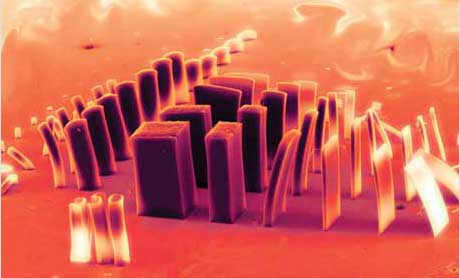As it turns out, there is A LOT they can do, and there is good reason for people to care. I found that carbon nanotube powders are currently used in products such as rechargeable batteries, automotive parts, sporting goods, boat hulls, and water filters. Carbon nanotube plastics can be found in electrostatic-assisted painting of mirror housings, fuel lines, and filters that dissipate electrostatic charge. Carbon nanotubes are also used in electromagnetic interference-shielding packages and silicon wafer carriers.
I also found a study from Rice University which found that carbon nanotubes could create improvements to mechanical properties of biodegradable polymeric nanocomposites for applications in bone tissue engineering. This is due to their weight being lighter than what is currently used.
Carbon nanotubes can also be used for thermal purposes. They can manage heat around electronic circuits. A millimeter-think layer of carbon nanotubes is able to cool components similarly to copper, but with one twentieth of the weight.
Carbon nanotubes can also be used as springs. When they are aligned, these carbon nanotube springs can achieve an energy density that is 10 times greater than steel springs.
There are so many more applications of carbon nanotubes, including medical applications, composite materials, microelectronics, transistors, solar cells, hydrogen storage, chemical applications, optical applications, and electronic components. In the future, there will be even more applications for these amazing structures!
Works Cited
De Volder, Michael, and Sameh Tawfick. "Carbon Nanotubes: Present and Future Commercial Applications." Carbon Nanotubes: Present and Future Commercial Applications. Science, 1 Feb. 2013. Web. <http://www.sciencemag.org/content/339/6119/535>.
Kordás, K. "Chip Cooling with Integrated Carbon Nanotube Microfin Architectures." Chip Cooling with Integrated Carbon Nanotube Microfin Architectures. Harvard, Mar. 2007. Web. <http://adsabs.harvard.edu/abs/2007ApPhL..90l3105K>.
Lalwani, Gaurav, Allan M. Henslee, Behzad
Farshid, Liangjun Lin, F. Kurtis Kasper, Yi-Xian Qin, Antonios G. Mikos,
and Balaji Sitharaman. "Two-Dimensional Nanostructure- Reinforced
Biodegradable Polymeric Nanocomposites for Bone Tissue Engineering." Biomacromolecules.
U.S. National Library of Medicine, 12 Feb. 2013. Web.
<https://www.ncbi.nlm.nih.gov/pmc/articles/PMC3601907/>.
Livermore, Carol. "Carbon Nanotube Super Springs." Carbon Nanotube Super Springs.
ASME, Mar. 2011. Web.
<https://www.asme.org/engineering-topics/articles/nanotechnology/carbon-nanotube-super-springs>.
"Potenital Applications of Carbon Nanotubes." Wikipedia.
Wikimedia Foundation, n.d. Web.
<https://en.wikipedia.org/wiki/Potential_applications_of_carbon_nanotubes>.

No comments:
Post a Comment